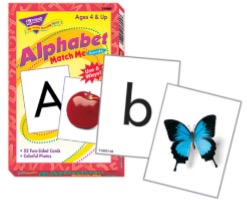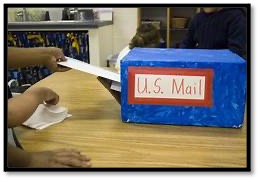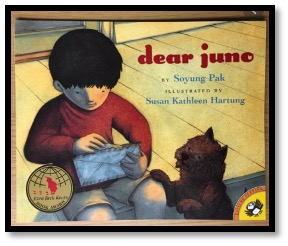Children will write letters and messages to share their ideas, opinions, and feelings and ask questions.
Educators/Families will listen to and write down children’s messages.
When families and friends are physically distant, we can send messages to keep in touch and build connections. For example, the ‘Big Idea’ around messaging can be “we send messages to share ideas and feelings” and “people communicate in writing.” Composing a message allows a child to use their voice to communicate with others. Message writing motivates children to put pencil to paper and can include mark-making, drawing, writing single letters, or sounding out words. Messages can be passed, mailed, or emailed to family members, neighbors, community workers, and teachers and staff at school.
A message center at school or home can include:
- Alphabet cards
- Message words
- Post cards
- Stamps (stickers, cut from mail received, or child designed)
- Envelopes Envelope Template
- Paper, pencils, crayons, scissors and glue sticks.
- A homemade mailbox


Keep the materials together in a box or bin for easy access and clean-up.
Process:
- To begin, model writing a short letter or postcard. Next, with the child surface whom their message is for and what they want to say. Some children will want to write letters, familiar words, and sound out less familiar words and drawings that they can label.
- Encourage the child to write the greeting (to, dear) and ending (from, love) of the message and sign their name.
- Model how to address the envelope to the recipient for US Postal Service messages.
- Other messages can use the resource section to create envelopes and stamps.
Resources:
Books:
A Letter to Amy by Ezra Jack Keats
Dear Juno by Soyung Pak and Susan Kathleen Hartung

